Sewing Glossary: How To Sew A Godet Tutorial
One way of adding fullness to a particular area of your garment, for example, a hemline on a skirt or a back of a dress or even the bottom of a sleeve, is by inserting panels of fabric which are commonly known as godets.
A godet is usually triangular in shape (but not necessarily) and is very easy to sew. It gives you extra volume and flare as you walk. It’s amazing how a simple triangle of fabric can change the whole look of a garment. Explore this new sewing technique in our easy tutorial!
Materials & Tools
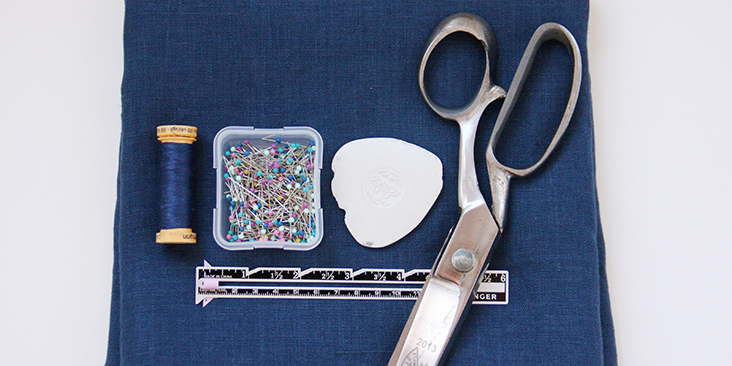
Fabric of your choice (we are using IL019 INSIGNIA BLUE Softened Medium Weight Linen), matching sewing thread
Scissors, pins, chalk, ruler, sewing gauge, sewing machine
Difficulty
Beginner
Time
1 hour
Steps
Note: Prewash your fabric and tumble dry it until it is still slightly moist, dry in room temperature. Iron the fabric so it is easier to work with.
Before sewing, finish the vertical raw edges of your godet and the straight panels with a serger or a small zigzag stitch to prevent the fabric from fraying in the future.
1. Start by sewing your straight panels right sides together at your usual seam allowance (we are sing 3/8” (1 cm) seam allowance) and stop where you want your godet to start.
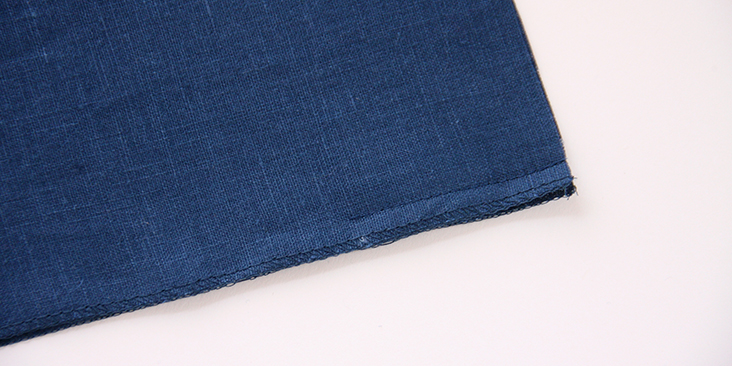
2. Press your seam allowance open all along the stitch line and then down to the bottom of your future godet.
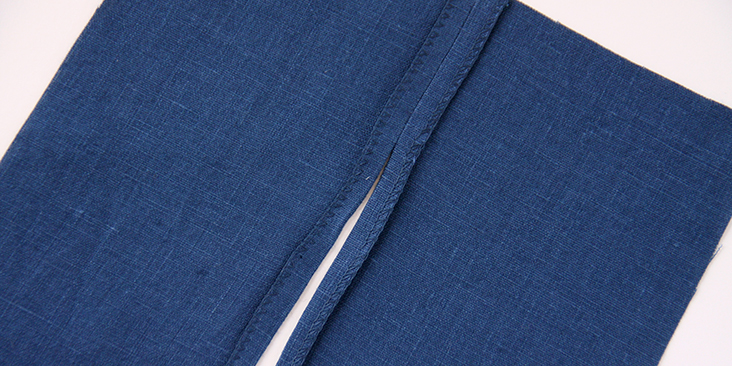
3. Take your triangle of fabric and mark a dot where the seam allowances intersect (for example, we are sewing with a 3/8” seam allowance, so we’ll draw two lines 3/8” from the raw edges and the point where they cross is the top of your godet).
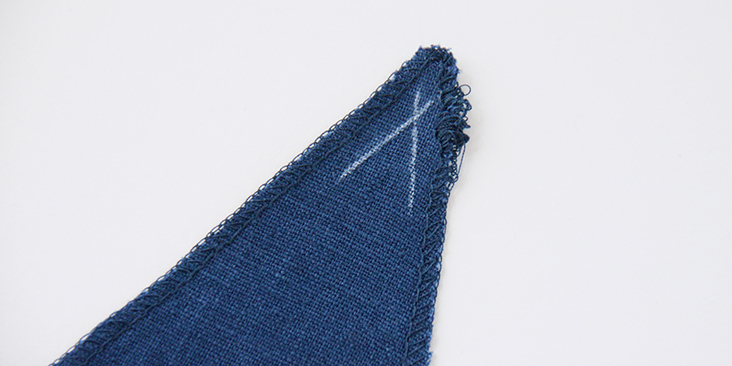
4. Now pin one side of the godet to the garment’s seamline right sides together. Position the dot to where the seam ends, right in the center of the seamline. Don’t pin the other side yet as it will most likely cause a tuck at the point.
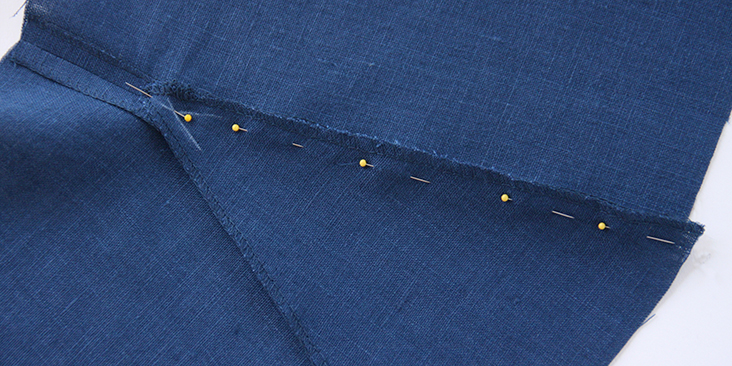
Tip: Place your pins in the crease of your garment’s pressed seam allowances. This way when you stitch, you’ll know where the crease is and will be able to use your pins as a guide for your line of stitching.
5. Using a very small stitch length (1mm – 1.5 mm), start sewing the godet (that is facing you) to the garment for about an inch or so. Do not backstitch at the point as it may ruin an attractive insert. Very small stitches are sufficient to secure the point of the insert. Once you’ve stitched the top (for approximatively 1 inch), switch to your regular longer stitch length and sew down to the end of the godet. Backstitch at the bottom.
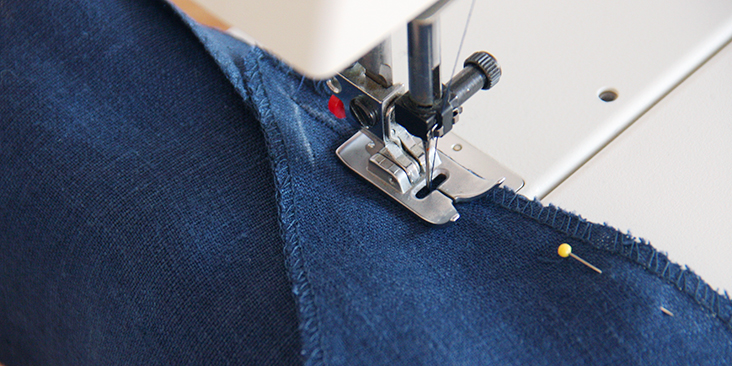
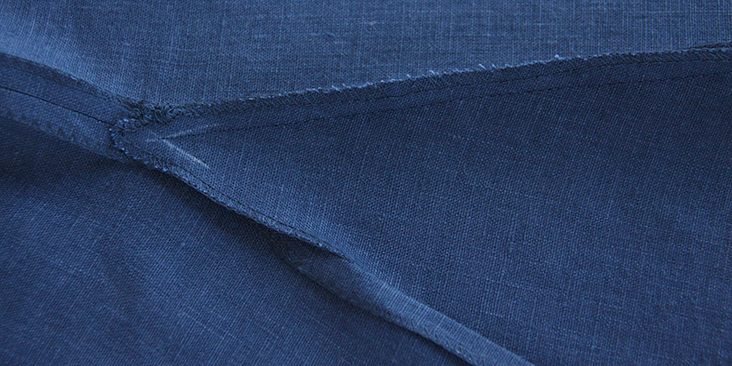
6. Match and pin the remaining side of the godet to the opening.
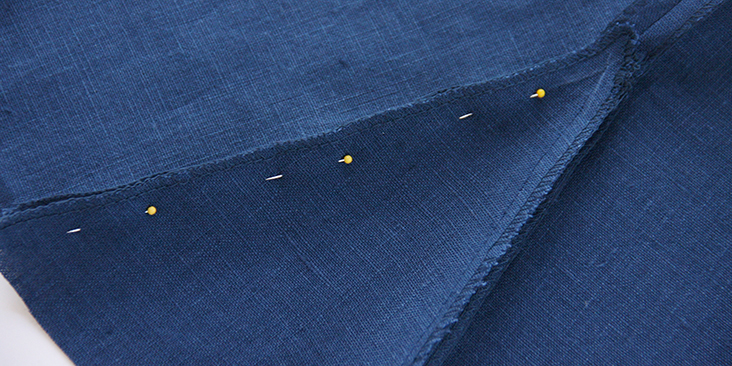
7. Insert your needle at the point where the first stitching line ends and sew the second side of the godet using a smaller stitch length near the point and a larger stitch length down to the wide end. Remember to backstitch when you come to the end.
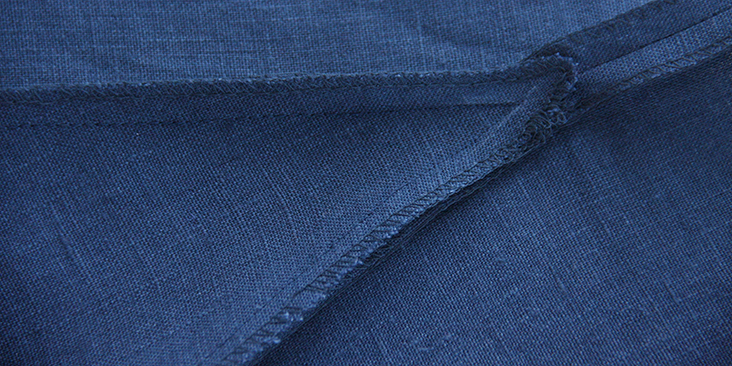
8. Press the seam allowances away from the triangle and admire your beautifully inserted godet.
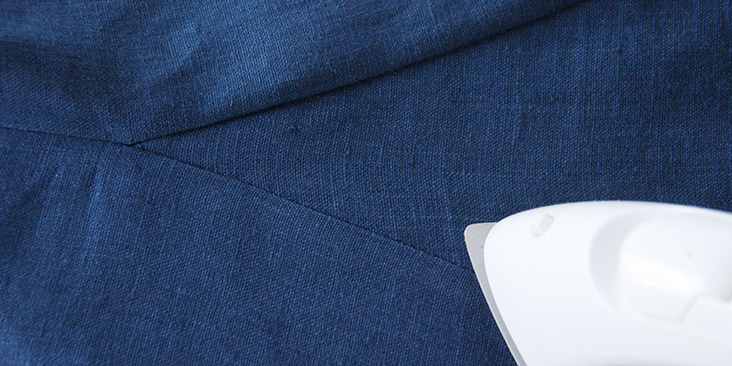
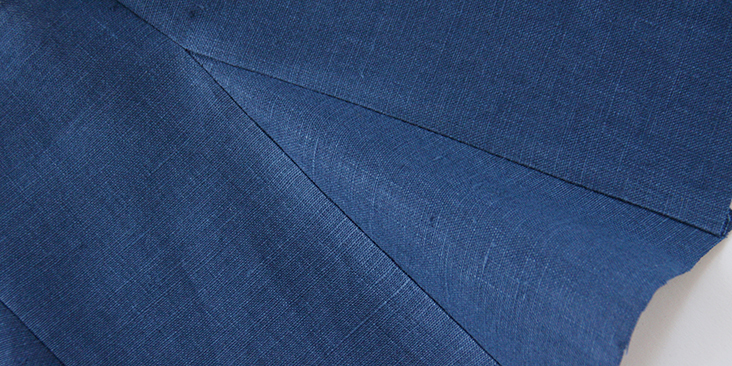
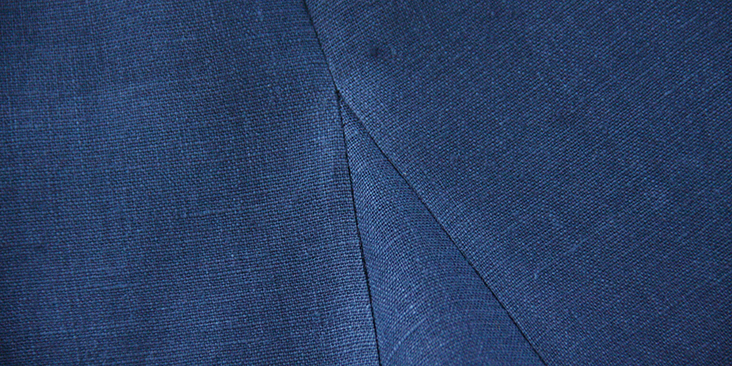
Remember that you can also use contrasting fabric for the godet to create a decorative effect.
Have a browse through our selection of linen and see which of our fabrics inspires you to use your new skill!






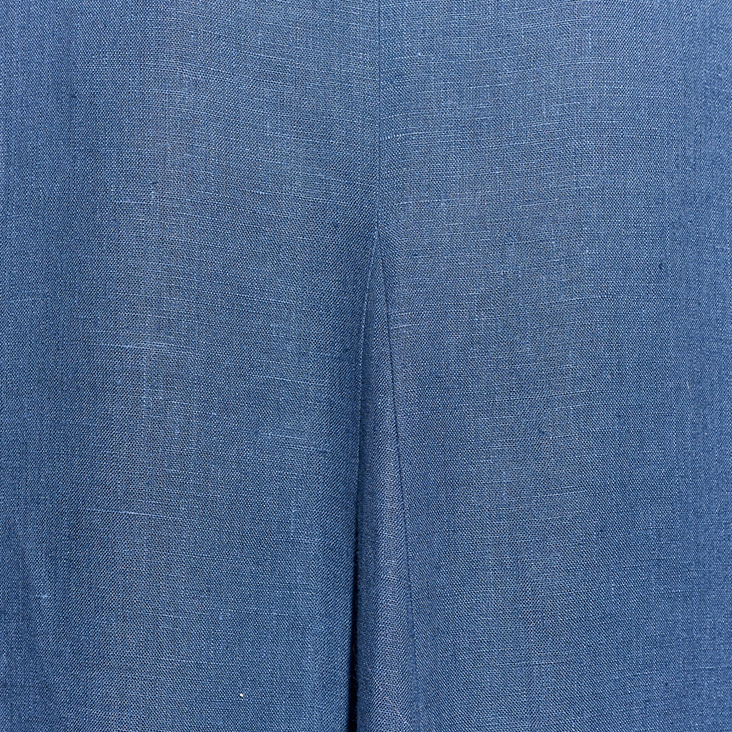


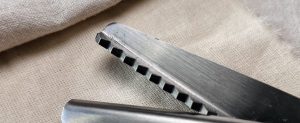












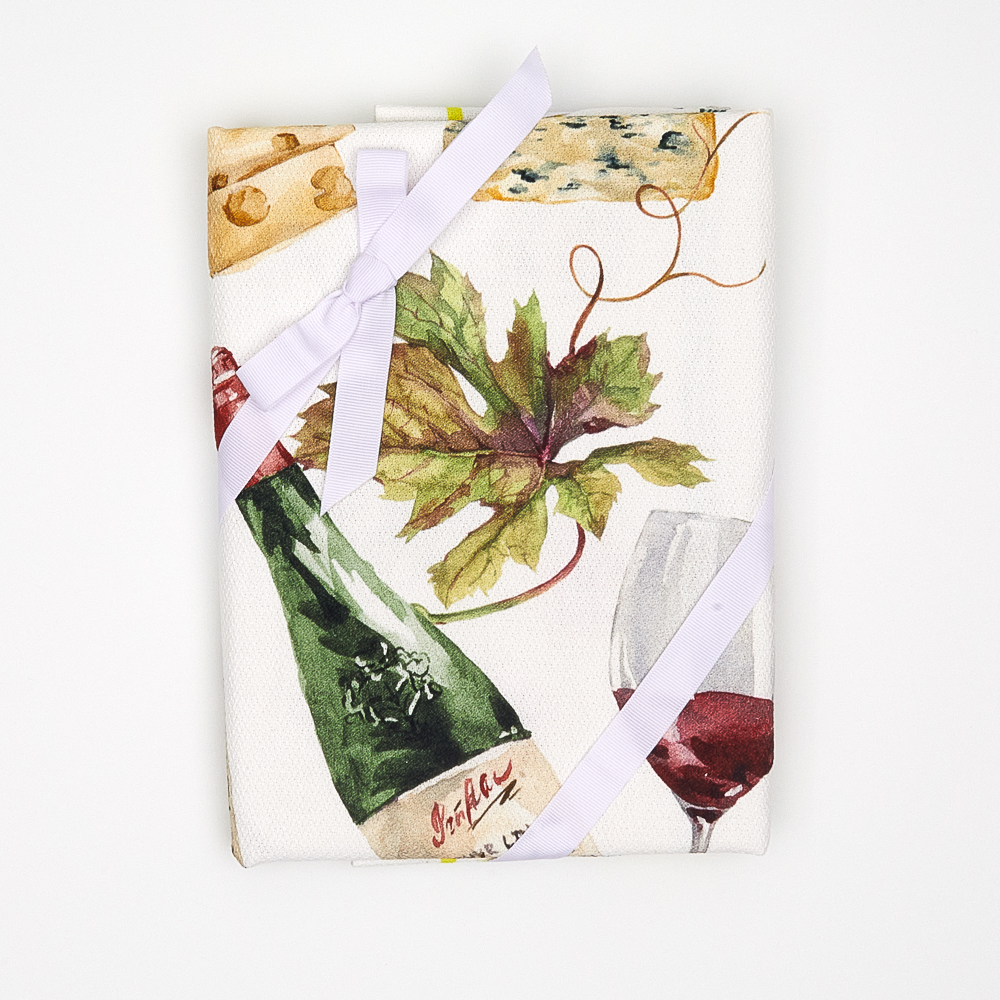







10 Comments
Cotton Fabrics - Marketmuni
I Read your Blog it is Very nice,Informative and Useful for a Fabrics. This is a Excellent Tips for use Fabrics .I will bookmark your blog and take the feeds.Thank You!!!
Rima Khusainova
Thank you so much!
Deborah Lockley
When I have an old top or see a RTW 3/4 or long sleeved garment that I really like and fits well at the shoulders and bust but is too small in the hip, I will cut the sleeves to a short sleeve and use the left over to make a godet at the hem. I start about an inch under the sleeve on the bodice and continue to the hem. They end up about 1/2 to 1 ” in width at the hem line on each side and that is usually more than enough to give a nice drape. Because I am short (5’2″) there is normally more then enough material to do this.
bobbie
Very well explained no matter what you call it. Great pictures and directions. Thank you
Rima Khusainova
Thank you so much Bobbie!
Sylvia
This is also known as a gore.
xarophti
Godet? That’s a fancy term for a gusset. Unless that’s what they’re calling ones at the hemline these days. 🙂
Susan
Godet is not a new term at all. It is what I have always called this type of enhancement. You can use it to add fullness and I used it to add a train to my neice’s prom dress many years ago. I have always considered a gusset to be to release a tight spot under the arm or in the crotch.
Eowyth
There are a couple of terms to describe adding this type of material. Here’s a couple of websites describing the differences. 🙂
https://clothingthepast.wordpress.com/2013/11/14/godet-gore-and-gusset-what-are-they-and-why-cant-we-use-just-one-term/
https://www.quora.com/Sewing-What-exactly-is-the-difference-between-a-gore-and-a-godet
Becki Graham
Good explanation!